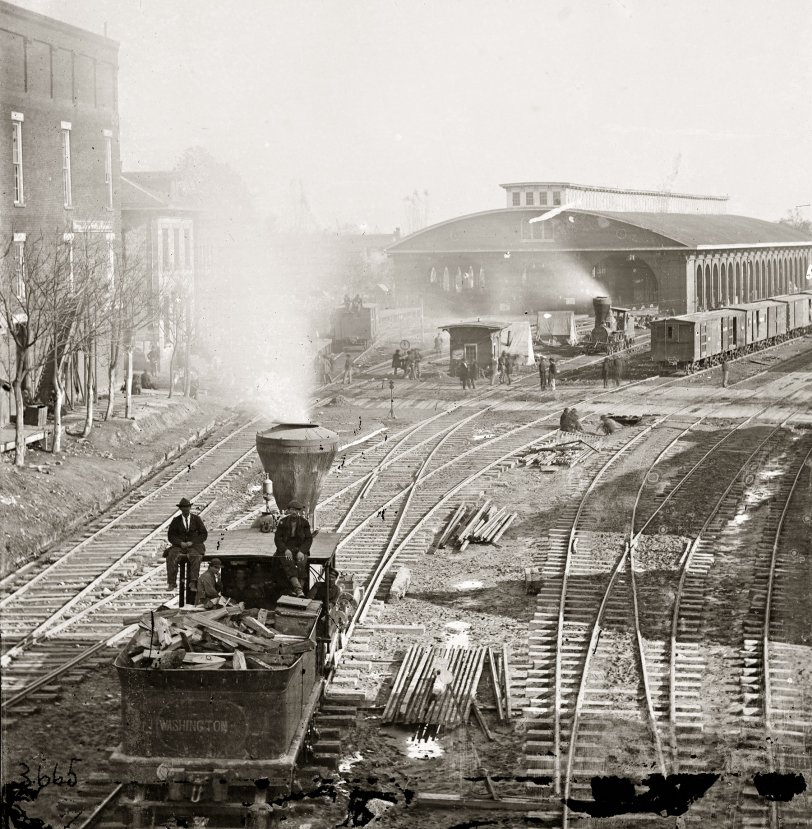


Framed or unframed, desk size to sofa size, printed by us in Arizona and Alabama since 2007. Explore now.
Shorpy is funded by you. Patreon contributors get an ad-free experience.
Learn more.

- Details, Details
- What's that building to the left of the tower?
- Coal Barges
- Bromo-Seltzer
- Inner harbor
- The Basin
- What a headache!
- Giant stepladder?
- Baldwin 62303
- Baldwin VO-1000
- Cold
- No expense spared
- Tough Guys
- Lost in Toyland
- And without gloves
- If I were a blindfolded time traveler
- Smoke Consumer Also Cooks
- Oh that stove!
- Possibly still there?
- What?!?
- $100 Reward
- Freeze Frame
- Texas Flyer wanted
- Just a Year Too Soon
- WWII -- Replacing men with women at the railroad crossing.
- Yes, Icing
- You kids drive me nuts!
- NOT An Easy Job
- I wonder
- Just add window boxes
Print Emporium
Atlanta Depot: 1864

1864. "Atlanta, Georgia, railroad yards." Wet plate collodion glass negative, left half of stereograph pair, by George N. Barnard. View full size.
Burned
And on September 2nd 1864, the departing Union troops set fire to this railroad terminal and all its standing Confederate railroad rolling stock to ensure the enemy would not be able to readily reclaim the area. Next day, the mayor of Atlanta and aldermen surrendered the city to the Union, asking for further protections and no additional private property destruction.
That scenario was famously dramatized in Gone With the Wind, both book and film.
Blades, points, switches
The "blades" you refer to are properly called "points." Points move back and forth to be pushed close to the main running rails to make the locomotives go to the appropriate track. The switches are called stub switches.
Link-and-pin couplers
Before the day of the automatic coupler, many a railroad worker lost limb or life to the dangers involved with building a train.
Hangin' Out
That's a lot of guys just hangin' out in the switchyard...
Locomotive Smokestacks
The large stacks were indeed intended to help keep embers from falling on the grass along the tracks. They are much more complicated than they appear since they had cast iron deflectors and screens inside the stacks.
Stacks
Does anyone know why the engine stacks are so big, especially compared to the size of the shunters. Creosote traps? Flash and ember traps?
Lil Switcher
Check out the cute little switch engine steaming away over by the cut of cars on the right. Those stub switch stands are the precursors to the harp switch stands, seen here.
Buster
This photo brightens the day by bringing Buster Keaton's "The General" to mind -- especially the scene involving the famous Keaton curve.
Point (Switch) Blades
Notice how there are no blades as such. Sections of rail move across when the lever is pushed/pulled rather than the traditional machined tapered blade.
























On Shorpy:
Today’s Top 5